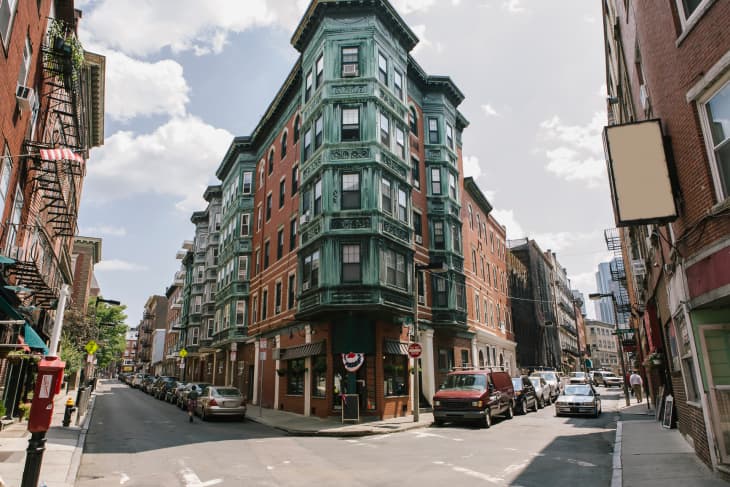What It’s Really Like to Own a Pied-à-Terre, According to Real Estate Pros

Sprinkling French terms into the English lexicon makes things sound fancy, n’est-ce pas? But when the phrase pied-à-terre is used to describe a homeowner’s secondary property, it means more than its très chic interior design.
If the thought of owning one home is daunting enough, the idea of a pied-à-terre might be, well, a bit foreign to you. Ahead, find out what a pied-à-terre is, as well as the advantages and disadvantages of owning one.
What is a pied-à-terre?
It’s an apartment or some other type of small secondary residence — typically in a large city — that’s used occasionally by its owners.
What is the literal meaning of pied-à-terre?
Pied-à-terre is literally translated as “foot to earth.” (For fellow grammar nerds, the plural is pieds-à-terre.) Per Merriam-Webster, it’s pronounced pē-ˌā-də-ˈter, which is likely not helpful at all unless you majored in linguistics, so here you go: pee YED ah tare.
Great, but what is a pied-à-terre in real estate?
Pied-à-terre describes a small secondary residence, usually an apartment, that is used occasionally yet regularly enough to make it worth buying as opposed to renting or leasing a hotel or Airbnb. They’re most often found in big cities, where owners might stay often for work or pleasure and want to enjoy a home-away-from-home experience.
Pied-à-terre vs. vacation home
Not all vacation homes are sprawling villas, but they are usually large enough to house families and assorted guests simultaneously. The opposite is the case with pieds-à-terre, which are usually small enough for an individual’s or couple’s living space only.
Here are a few scenarios where a pied-à-terre could be a good alternative to hotels or Airbnbs.
- An individual who frequently travels to the same city for work and wants a place to call home.
- An out-of-town couple who frequently visits family but prefers their own space rather than be someone’s houseguest.
- Anyone with enough money and free time to visit their favorite city, any time they want.
Aside from not being “at the mercy of hotel availability,” broker Maria Daou with Coldwell Banker Warburg, says of owning a pied-à-terre: “You can leave personal items there year-round, making it easier to travel at the last minute.”
Mihal Gartenberg, another broker with Coldwell Banker Warburg, calls a pièd-a-terre a “sanctuary” that’s more appealing than a hotel stay — especially in a big city like New York. “Having a pied-à-terre negates any cost-cutting measures to your trip,” she says. “You can stay longer, come for the one night to enjoy an event or performance, or, sadly, work later as needed.”
The problem with pieds-à-terre
If you’ve scoured co-op listings in dense cities like New York, you might find some that say “no pied-à-terre.” The short explanation is this: Co-op boards like it much better when owners live on the premises full-time.
“Some co-ops don’t allow pièd-a-terre ownership, as some owners allow friends and family to use the apartment throughout the year,” says Gartenberg. “The co-op owners feel uncomfortable with so many strangers coming and going from the building.”
Condos are a bit more lenient, says Daou, although it is “quite expensive to buy and carry the monthly charges and taxes for an apartment that is not your primary residence.” And unlike relying on housekeeping staff for a hotel room’s upkeep, maintaining a pied-à-terre is up to you.
Is a pied-à-terre worth it?
Some will say any real estate investment is worth it. But a pied-à-terre is a unique type of investment property that is not for everyone.
Agent Jeremy Kamm, also of Coldwell Banker Warburg, says maintaining your investment can be tricky — especially if it’s not close to your primary home. “If you are not having someone regularly check in on the home or if you are not tuned in to what’s happening in the building, you are likely in for some surprises,” he says.
Gartenberg agrees. “Buyers should think about the challenges of being an absentee owner and find ways to mitigate it,” she says. “For example, I advise that my buyers find homes with resident managers or live-in supers.” She notes that a building with a doorman is a good option for added security.
Kamm says you will also need to approach the property hunt a bit differently than you would if it were your primary residence. Notably, be aware of carrying costs, which are the additional fees associated with ownership, like taxes and common charges for amenities you might not be around often enough to use. He adds that older buildings will likely require costly assessments for capital improvements, so aim for newer buildings that won’t carry those additional expenses.
If work and personal life keep you planted at home or, on the flip side, require you to be in a different time zone each week, then a pied-à-terre isn’t right for you. But if there’s a city out there that is a veritable second home for you, perhaps a pied-à-terre is the real estate investment opportunity you’ve been waiting for.